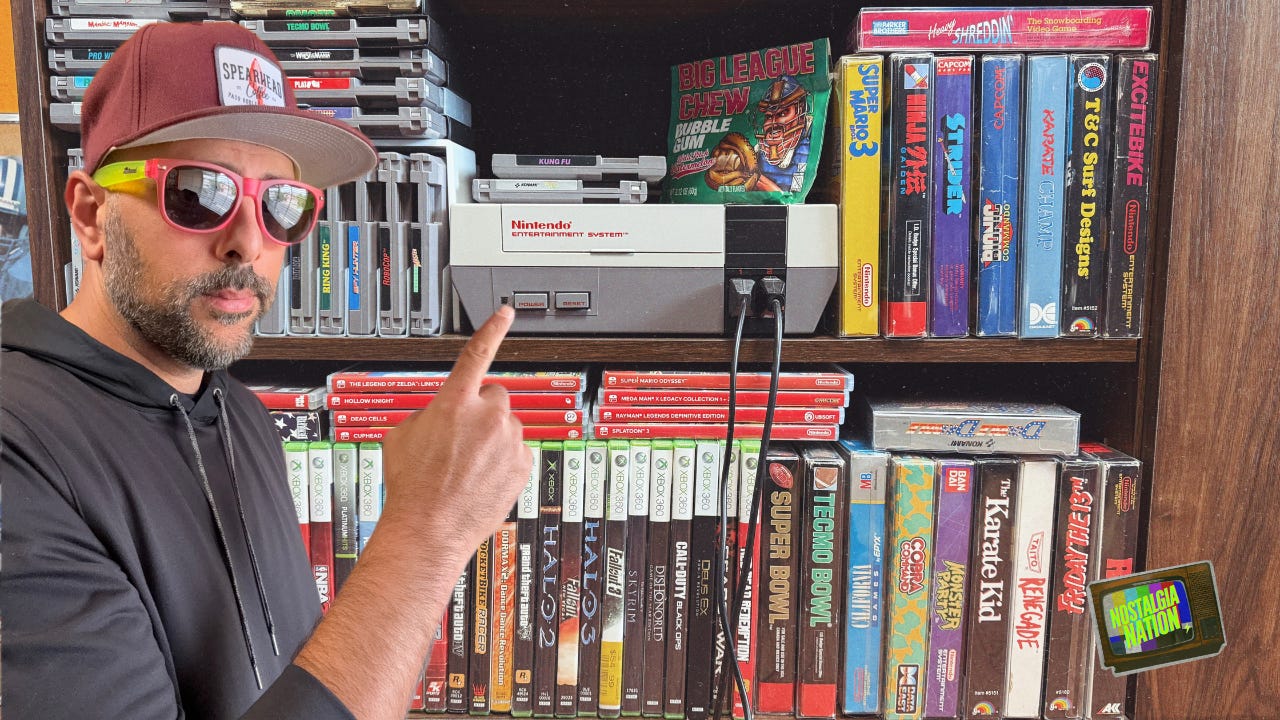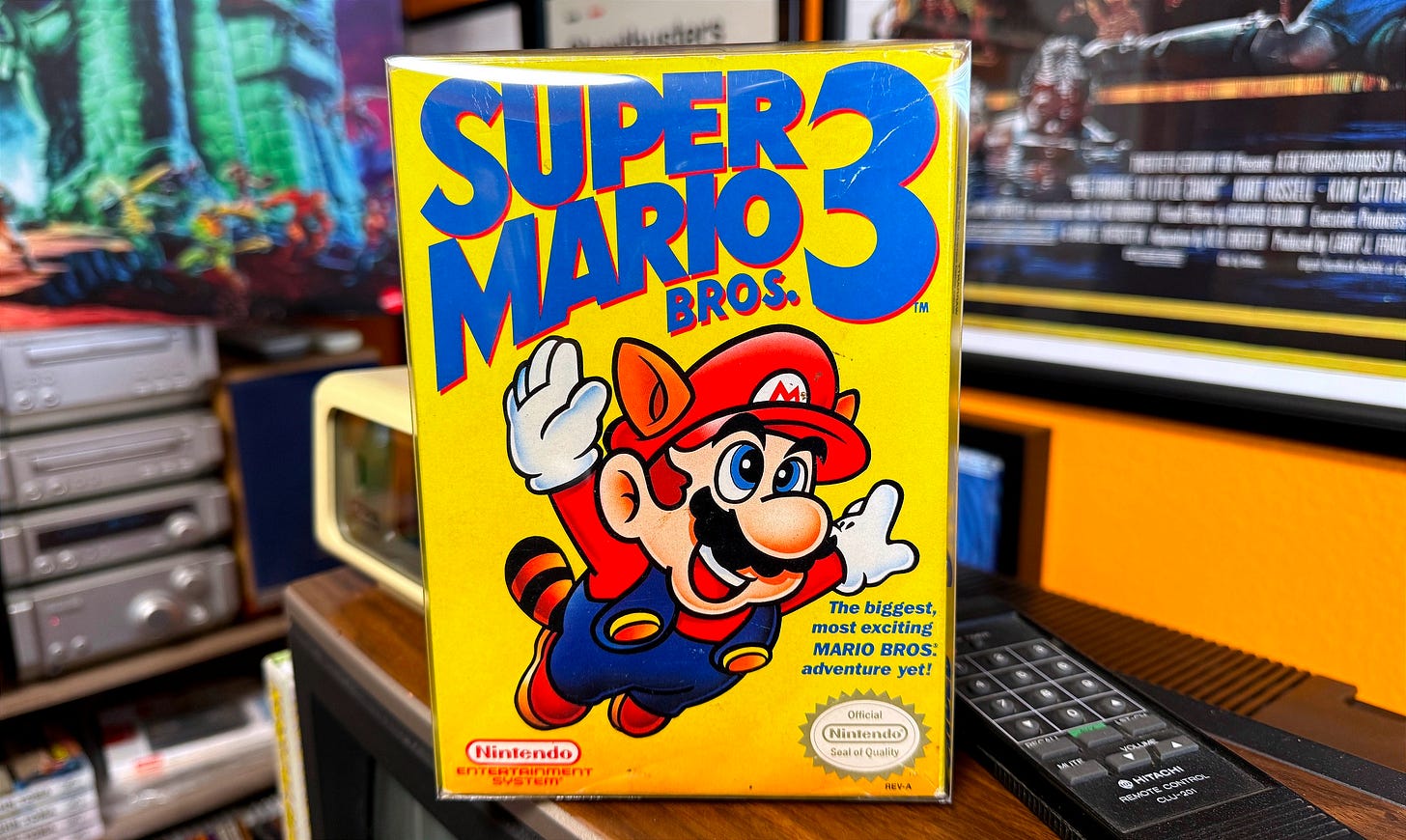Why Your Childhood Video Games Cost More Than Your Mortgage Payment
How Nostalgia, YouTubers, and Your Own Impulses Broke the Retro Game Market
I’m so tired of hearing the complaints about the rising costs of video games and vintage anything.
Wait… that was me too.
But I don’t care anymore… and I’ll tell you why at the end—
Remember when you could score a complete Super Mario Bros. 3 for around $20 pretty much anywhere? Well, now that same game sells for more than a high-priced dinner with your spouse!
Retro video games have shifted from nostalgic mementos into investment-grade collectibles, and the internet is not pleased.
But who’s to blame for this price surge? In a world of resellers, influencers, and grown adults hoarding Panzer Dragoon Saga for the Sega Saturn like it’s the actual Holy Grail, things have gotten frustratingly expensive.
(upgrade, and become a paid supporter of John’s publication to view the rest of this post, including highly detailed and nostalgic photos from John’s retro-gaming collection… and John’s personal experience and story surrounding it)…
Keep reading with a 7-day free trial
Subscribe to Nostalgia Nation ⚡ That 80s Dude to keep reading this post and get 7 days of free access to the full post archives.




